MARKET OVERVIEW
The Global Compression Socks Market continues to attract strategic focus in the wider textile and medical clothing sector, carving out a unique space that will develop alongside improving healthcare consciousness and new textile technologies. With health-aware consumers increasingly looking for preventive care options, compression socks will no longer be considered an accessory but an integral part of daily routines among all demographics. Their use in sports apparel, travel clothing, and rehabilitation wardrobes will experience new definitions, especially as digital health tracking and wearable technology begin to impact product functionality and design.
Global Compression Socks Market manufacturers will concentrate on developing socks that combine style, comfort, and clinical performance. Future product lines will include smart fabrics that can monitor circulation data or offer real-time biofeedback. This will drive conventional designs into more advanced directions, keeping pace with the consumer's demand for multi-purpose clothing. Concurrently, sustainability will become a major focus area, forcing companies to re-engineer material procurement and production processes. Recycled fibers, sustainable dyes, and energy-saving manufacturing facilities will begin to take center stage in redefining market norms.
Distribution-wise, the Global Compression Socks Market will transcend traditional channels of sale. Direct-to-consumer strategies and subscription products will gain wider traction as manufacturers seek to create tighter relationships with customers. The online marketplace will also continue to grow, with digital marketing approaches focused on customizing contact and building customer experiences. Moreover, partnerships between retailers and healthcare professionals will become increasingly prevalent, allowing these socks to be easily accessed through clinics and wellness centers, further blurring the distinction between medical need and lifestyle choice.
A further key evolution will be the expansion of the market to under-penetrated areas where awareness of venous health is still low. Health education campaigns and outreach programs, usually funded by government agencies or non-profits, will serve to disseminate information about the advantages of compression stockings. This will create gradual demand in historically back-end regions, supporting global market extension.
Technological innovation will not be limited to product design alone. Supply chain management and stock tracking will also be improved, with the use of artificial intelligence and data analytics. Through these, companies can more effectively respond to consumer demands while reducing waste and operation inefficiencies. Pricing models may also change in order to support increasing competition, promoting a balance between affordability and high quality.
Regulatory schemes will only improve, challenging players in the markets to remain compliant while seeking out certifications that add consumer confidence. Label transparency, quality control, and evidence of effectiveness will take on increased prominence as knowledgeable consumers question their transactions with increased vigilance.
Ultimately, the Global Compression Socks Market will reinvent itself through a combination of technological innovation, sustainable behavior, and consumer-led innovation. This ongoing evolution will see compression socks stay relevant not only as medical aids but as part of mainstream wellness and active living. The future holds a dynamic transformation, one that will continue to interest industry stakeholders and consumers alike in creating healthier, more comfortable lives.
Global Compression Socks market is estimated to reach $1,262.5 Million by 2032; growing at a CAGR of 4.2% from 2025 to 2032.
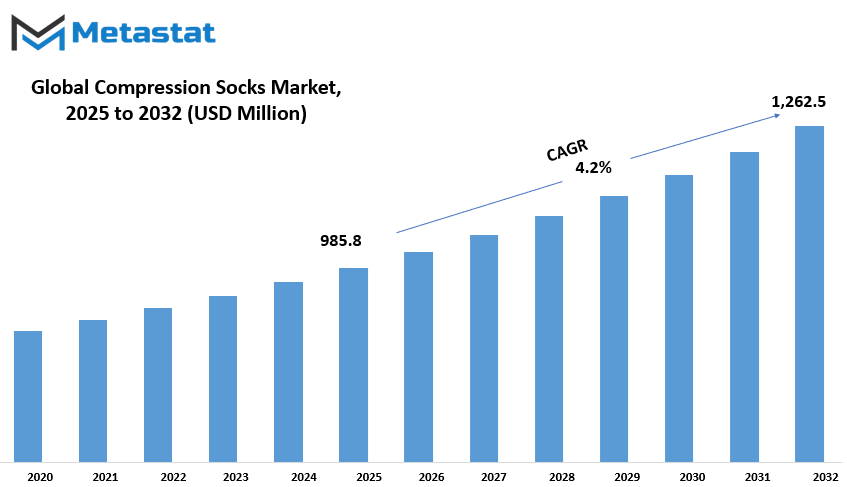
GROWTH FACTORS
The global compression socks market is rapidly gaining in popularity, and their potential is still developing solely because many more people are becoming aware of the medical benefits of these socks. Compression socks are used to stimulate blood circulation, reduce swelling, reduce the risk of blood clots, and relieve symptoms of venous diseases. As the awareness of compression socks increases, especially those consumers who are at risk of some circulatory problems, the demand will continue to grow. But there is another, very powerful, reason for the expanding market - the rise in active lifestyles. As people engage in sport and fitness training and other forms of physical exercise, there is a greater need for products that can enhance performance and limit injury. Sportsmen and women and gym lovers are adopting compression wear as an everyday part of their kit to help repair muscles and prevent injury. and forward at the demand.
Even though the market's outlook is favorable, there are barriers that can impede its growth rate. One of them is comfort. Some consumers point out that compression socks are too tight, uncomfortable, or just ugly, and therefore less likely to buy or wear regularly. This hesitance can delay market growth, especially with individuals who consider comfort and aesthetics in daily use. The second barrier is cost. Good quality compression socks tend to cost more than regular socks. For price-conscious consumers or those who have no idea how much compression socks will change their lives, the additional cost can be a deterrent. This price sensitivity combined with uncertainty regarding whether the product is effective may lead some not to make a purchase.
In the future, there are clear opportunities for growth if businesses act to assuage these fears. By expanding their product line to include more styles, colors, and materials, brands can attract more customers. Special designs for specific activities, such as running, hiking, or medical use, would also be able to attract new consumers looking for something that is made specifically for their needs. These efforts serve to meet consumer demand for more variety and improved aesthetics while leaving the door open for future market segments. Through intelligent innovation with a balance of function and fashion, the compression socks market can grow even further and extend to even more individuals in the coming years.
MARKET SEGMENTATION
By Compression Level
The demand for compression socks is still large, as more people are learning about the benefits and advantages of wearing compression socks. Compression socks are a particular type of sock that is designed to improve blood circulation in your ankles and legs, by giving pressure, and reducing swelling as well. Compression socks are sold to consumers who spend time on their feet, who travel a lot, physically active lifestyles (active shoppers), and for medical issues such as varicose veins, and deep vein thrombosis. Compression socks market will always expand. As the demand keeps increasing the companies are producing socks that are more comfortable, more stylish, and more versatile. One of the main features of compression socks is the level of compression; which means the amount of pressure applied on the sock.
Compression is further classified as mild compression, moderate compression, and firm compression. Generally, mild compression is recommended for daily wear in general for people seeking slight relief from minimal swelling or just want to prevent tired legs. Mild compression is also a good alternative for people who are using compression socks for the first time. Moderate compression, as is tends to have more pressure, offers a higher level than mild compression, and is recommended for consumers that present with more significant swelling in the ankle, mild varicose veins, or individuals recovering from minor procedure. Selecting the appropriate compression level is significant because sock with the wrong pressure, either too little or too much, will not achieve the desired results.
The market is also evolving with new fabric and designs making these socks attractive to more users today than in the past. Compression socks are now available in different colors, materials, and patterns and people are finding options that are both medically beneficial, as well as allow them to express themselves in style. Companies are also focusing on comfort when they develop socks by using moisture-wicking fabric and seamless toes to prevent irritation from the sock. As more people become aware of the benefits of compression socks, they will learn compression socks are not just for medical problems but actually to help maintain healthy legs. There is a a diverse adoption of socks by the general public of all ages and occupations and since the development of compression socks are only expected to increase, competition is sure to follow, allowing for better choices and opportunities for consumer' improved performance everywhere.
By Length
The compression socks market is expanding by the day as increasing numbers of individuals become aware of the medical benefits these products have to offer. Compression socks are made to compress the legs in a comfortable way, enhancing circulation and reducing swelling. They are usually prescribed for individuals who stand all day, for individuals who sit for a great deal of time, or for anyone with certain medical conditions such as varicose veins or deep vein thrombosis. There is growing demand from not just patients but also athletes and frequent flyers for such socks to serve as an easy means of keeping their legs comfortable and preventing leg fatigue.
As far as types are concerned, the market is divided into Knee-High Compression Socks, Thigh-High Compression Stockings, and Pantyhose or Compression Tights. Knee-high compressive socks are the favorite among crowds since they're simple to wear and go only on the lower leg. They're most often worn for general swelling in the legs, minor vein troubles, and to travel. Thigh-high compression stockings ride farther up the leg, also supporting the thigh. These are likely to be worn for more critical swelling or vein problems that need a bit of extra care. Pantyhose or compression tights are full-leg products and are usually recommended for people who need total support, including over the hips and waist. It is preferred by those who want both medical benefits and a clean look.
The market expansion is also propelled by the vast range of designs and materials used today. Manufacturers are going all out to make compression socks not only more comfortable but also stylish, with breathable fabric and the incorporation of features like moisture-wicking to attract more people. This has significantly lessened the work involved in wearing them every day without discomfort. In addition, the recent online shopping boom has made these products more accessible to customers, allowing them to browse through a vast array of options and sizes from the comfort of their homes.
By Material
The compression socks market by material is varied in what can be utilized and available for purposes and desires across a variety of uses. The most prevalent material that compression socks are constructed of is nylon, spandex or Lycra, and cotton-blend. All of these have benefits and are utilized for suitability to a specific purpose and in comfort. Nylon is applied on a large scale due to the fact that it is strong and durable. Nylon is a lightweight material that keeps the socks aired as well as offer the ideal compression. The individuals who wear compression socks for long periods, such as athletes or workers whose job entails standing for hours on end on their feet, utilize nylon because it's not deformed and durable.
Spandex or Lycra is another key material that is used in compression socks. It is also retained for being very elastic and flexible. Spandex compresses the socks on the legs and exerts even pressure, which is necessary to improve the circulation of blood. Since it is elastic in nature, it can be easily worn and removed and also keeps the socks in stretched condition once worn for a couple of times. The material could be blended with other materials just for the convenience of making socks comfortable and effective.
Compression stockings made of cotton blends are the best option since they are so smooth and silky. Cotton is a natural material, and once blended with another material, it will offer some degree of breathability and moisture management. Socks created in this manner are perfect for individuals with sensitive skin or who require something softer that will still provide compression. Cotton-blend socks are more likely to be the choice for casual use or prefer something that is naturally on the skin.
Overall, the compression socks market offers nylon for strength and durability, spandex or Lycra for stretch and elasticity, and cotton-blend for breathability and softness. All of them serve some specific purpose in meeting the needs of different users. If durability in wear, elasticity, or softness is what one requires, there is something for every need. Such a range of materials ensures that compression socks can be both comfortable and functional, and people can simply cope with varying health or way of life demands. With the growing market, the focus on material quality is still essential because the right choice can have a great influence on performance and user satisfaction.
By Distribution Channels
The global compression socks market is developing moderately due to the fact that compression socks bring awareness to enhance circulation, avoid swelling, and provide support for standing or sitting for a long time. Compression socks are being embraced by patients suffering from such diseases as varicose veins, deep vein thrombosis, and diabetes. Compression socks are also being worn by sportswomen and athletes and physical trainers to enhance performance and facilitate the healing process after exercise. Comfortability, wearability, and performance are now the most important traits that make buyers purchase compression stockings.
On the basis of channel of distribution, the worldwide compression socks market can be segmented into retail pharmacies, online stores, and medical shops. Retail pharmacies continue to remain highly important since they are readily available, and individuals are comfortable and used to purchasing healthcare products from them. Consumers can visit a nearby pharmacy to judge product quality with their own eyes and can even consult a pharmacist, thereby increasing their confidence to purchase.
Web businesses are quickly poaching market share as web browsing is becoming a more popular habit. It's now convenient for the majority of people to do their shopping at home, make price comparisons, read reviews, and have their products delivered directly to their doors. Online purchases are particularly inviting to youth and rural communities that have no such outlets. It further enables one to purchase a greater variety of items and brands, which may not be carried locally.
Medical supply shops continue to be a mainstay channel, particularly for those patients who need compression socks of particular medical-grade pressures. They usually have professionals who know their patients' needs and can recommend the appropriate types of socks to them. These shops also generally have close cooperation with healthcare practitioners who refer clients to these stores for specialized solutions.
Each of these channels has its own advantages, and collectively they serve to address the varied needs of the market. As awareness increases, and more individuals become familiar with the benefits of compression socks, all three channels should experience consistent demand. The blend of in-person service, convenience, and expert support guarantees that consumers have ample choices to discover what works best for them. This balanced strategy will most probably continue to make the market grow, with new brands and technologies making compression socks even more effective and popular in the future.
|
Forecast Period |
2025-2032 |
|
Market Size in 2025 |
$985.8 million |
|
Market Size by 2032 |
$1,262.5 Million |
|
Growth Rate from 2025 to 2032 |
4.2% |
|
Base Year |
2024 |
|
Regions Covered |
North America, Europe, Asia-Pacific, South America, Middle East & Africa |
REGIONAL ANALYSIS
The Compression Socks market globally is geographically segmented, through which businesses and researchers can pinpoint where the potential for growth and demand exists. The leading region in this market is North America, further covering the U.S., Canada, and Mexico. These countries are important because of their established health systems and focus on fitness and wellness. In Europe, the market is comprised of the UK, Germany, France, Italy, and the Rest of Europe. The region is aging at a high rate and there is greater awareness about the benefits of compression socks, which is in favor of continuous market growth. Moving on to the Asia-Pacific region, India, China, Japan, and South Korea are leading the market here, followed by the Rest of Asia-Pacific. The market here is growing at a fast pace due to a rise in health consciousness, increased sports activities, and improved medical infrastructure. In South America, Brazil and Argentina are the major countries, followed by the Rest of South America. Although this region is developing slowly in healthcare, there is growing demand for products that can help improved circulation and relieve leg pain, which is fueling the growth of the market.
Lastly, the Middle East & Africa region includes GCC Countries, Egypt, South Africa, and the Rest of Middle East & Africa. The region is witnessing a gradual but consistent rise in demand, especially in regions where health awareness is increasing and consumers are becoming increasingly open to trying supportive health products like compression socks. Understanding of these regions allows companies to make educated decisions about where to focus marketing and distribution. Each region has its own set of demands and issues, but overall, the Compression Socks market globally will grow as more and more people become aware of the benefits that can be gained from such products. Whether sports, medical, or for all who work long hours on their feet, compression socks are gaining popularity worldwide. The market's regional segmentation gives a clear picture of how demand is spread and allows companies to prepare their strategies in a way that will meet the needs of different customer bases. With growing health awareness, the demand for compression socks will continue to grow in all these regions.
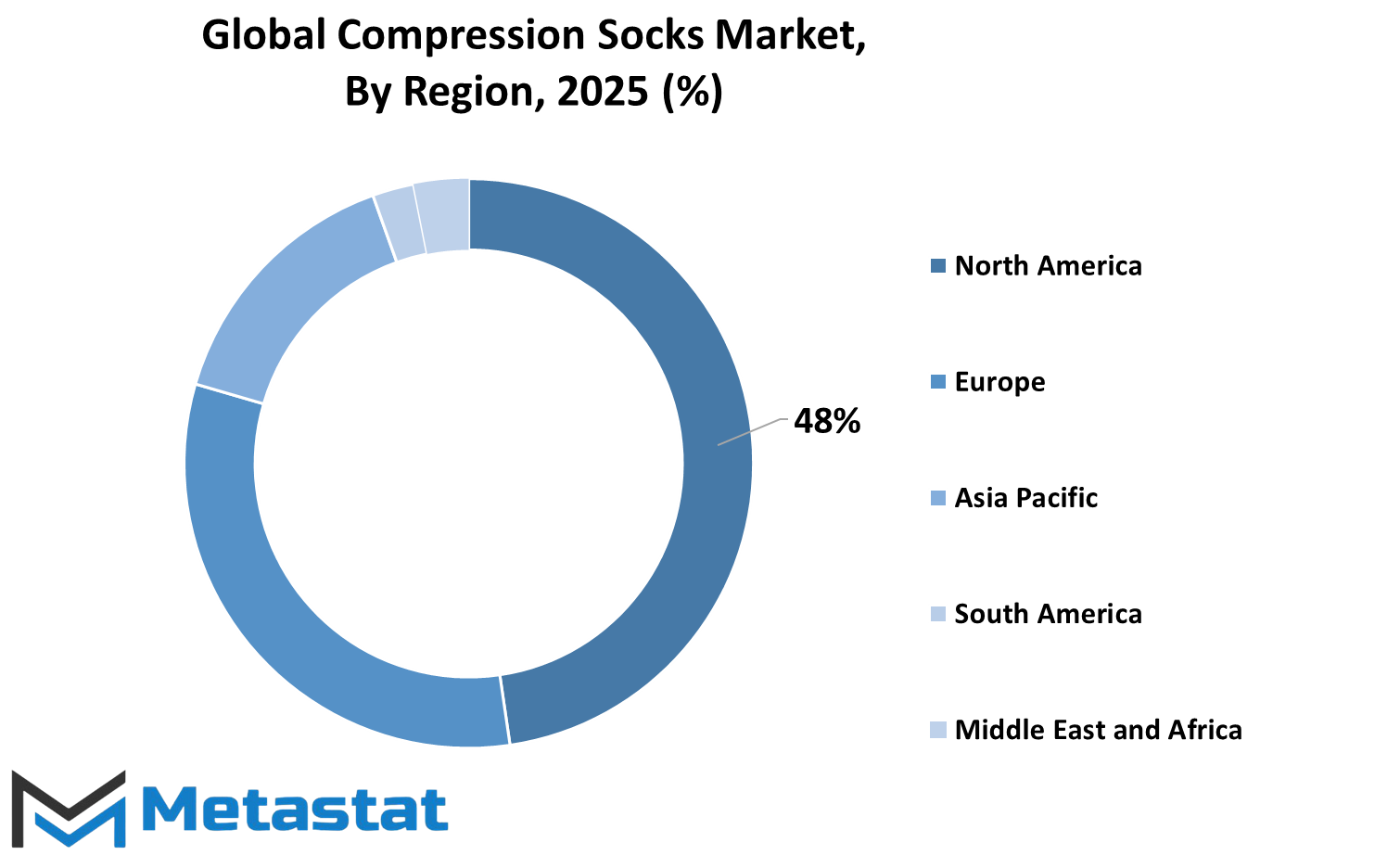
COMPETITIVE PLAYERS
The compression socks market has risen gradually over time as more and more individuals discover the health value of these devices. Compression stockings are made to enhance blood circulation, prevent swelling, and ease pain in the legs. They are usually suggested for individuals with prolonged standing and sitting, sportspersons who want better performance and recuperation, and patients with ailments such as varicose veins or deep vein thrombosis. As the awareness about good health and wellbeing increases, increasing numbers of individuals are opting for these socks for both medical needs and general day-to-day use.
The industry is competitive in nature, and numerous brands make every effort to cater to the rising demand. Among some of the leading players of the industry are Tommie Copper, 2XU, Run Forever Sports, BeVisible Sports, Thirty 48, Camden Gear, Zensah, BodyMate, Sanyleg S.r.l., Novamed, Santemol Group Medikal, Medi GmbH and Co. KG, Calze G.T. S.r.l., KOSEMED, Thuasne, BSN Medical, SIGVARIS, SORGEN.CO, and 3M. All of these firms are working to create socks that not only have medical applications but are also fashionable and comfortable enough to be worn as a part of daily attire. Materials and design improvements have made today's compression socks available in different colors, lengths, and styles to suit various needs and tastes.
The increase in sports participation and fitness activities has also contributed significantly to the growth of the market. Compression socks are utilized by athletes to enhance blood circulation and alleviate muscle soreness, which enables them to recover quickly after strenuous exercise or competition. Additionally, health issues related to travel have spurred demand as individuals seek to avoid swelling of the legs and blood clots during long-distance flights.
Compression Socks Market Key Segments:
By Compression Level
- Mild Compression
- Moderate Compression
- Firm Compression
By Length
- Knee-High Compression Socks
- Thigh-High Compression Stockings
- Pantyhose or Compression Tights
By Material
- Nylon
- Spandex or Lycra
- Cotton-Blend
By Distribution Channels
- Retail Pharmacies
- Online Retailers
- Medical Supply Stores
Key Global Compression Socks Industry Players
- Tommie Copper
- 2XU
- Run Forever Sports
- BeVisible Sports
- Thirty 48
- Camden Gear
- Zensah
- BodyMate
- Sanyleg S.r.l.
- Novamed
- Santemol Group Medikal
- Medi GmbH and Co. KG
- Calze G.T. S.r.l.
- KOSEMED
- Thuasne
WHAT REPORT PROVIDES
- Full in-depth analysis of the parent Industry
- Important changes in market and its dynamics
- Segmentation details of the market
- Former, on-going, and projected market analysis in terms of volume and value
- Assessment of niche industry developments
- Market share analysis
- Key strategies of major players
- Emerging segments and regional growth potential



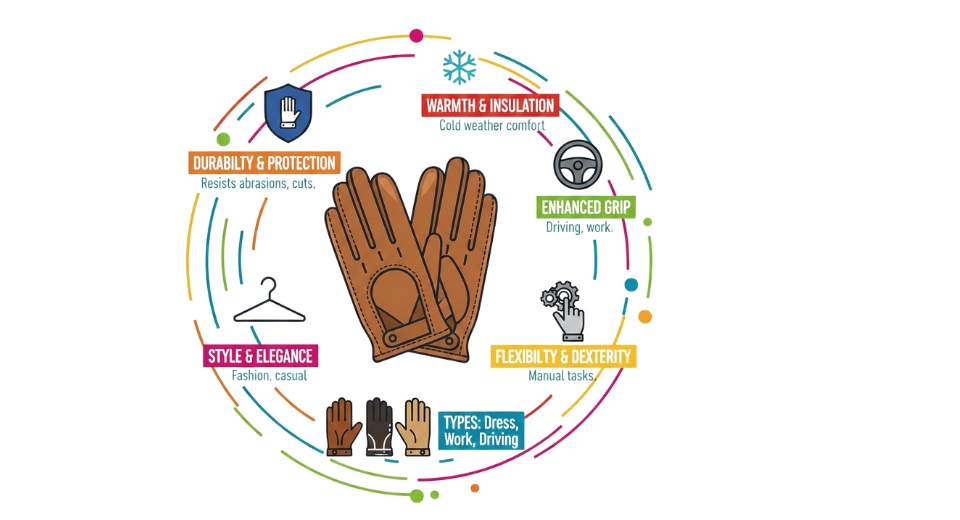
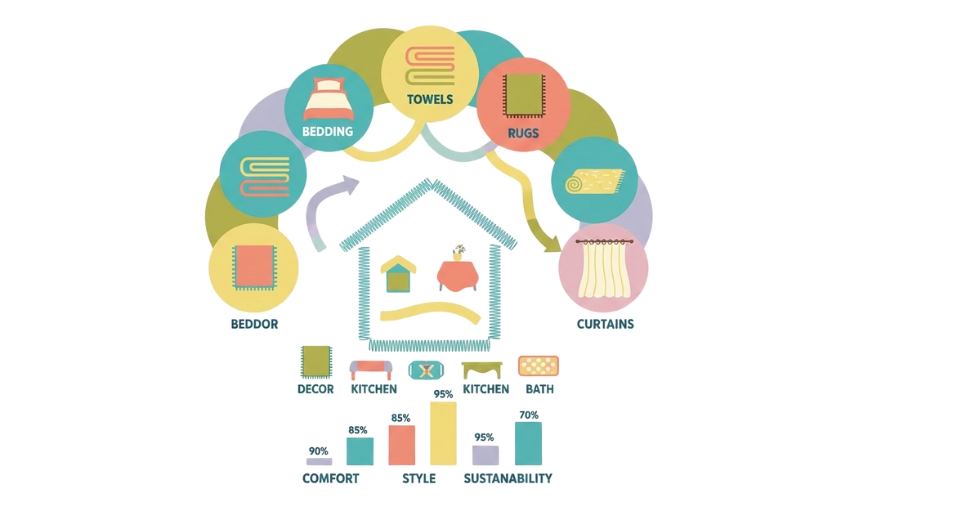

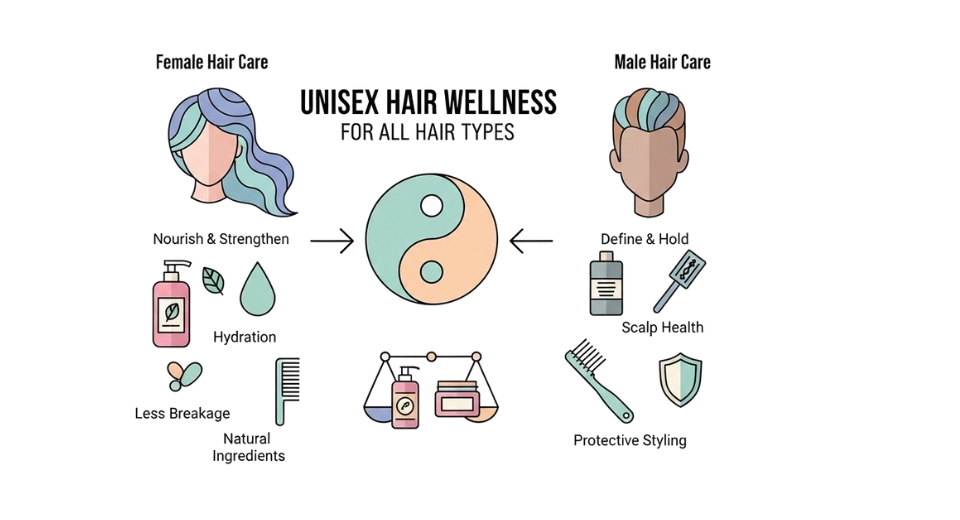

 US: +1 3023308252
US: +1 3023308252






